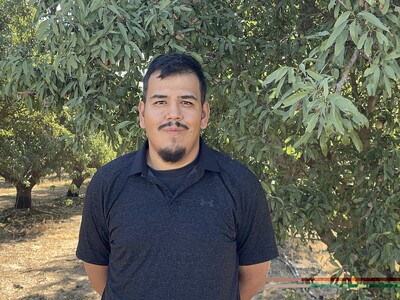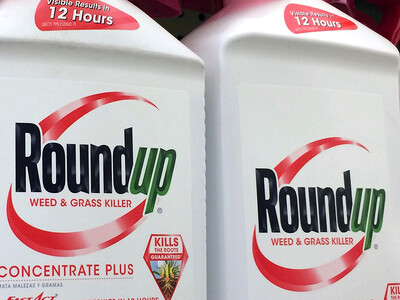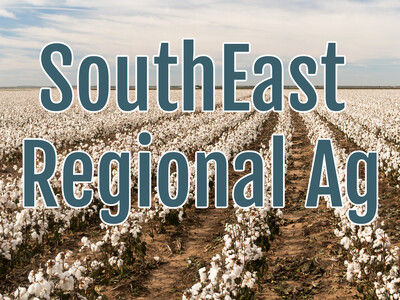Herbicide-resistant weed
An herbicide-resistant pigweed first confirmed in the state less than three years ago has already infested more than 7,000 acres of southern Idaho cropland and is taking a heavy toll on yields, a University of Idaho Extension weed scientist warns.We reported in 2022, that Albert Adjesiwor, who is based at the U of I Kimberly Research and Extension Center, began showing potted Palmer amaranth plants to area growers and agronomists. He taught them to identify the pigweed by its smooth stems, egg-shaped leaves and elongated petioles, knowing it was already widespread in many surrounding states and convinced it would soon surface in Idaho.
That same season, Adjesiwor’s fears were confirmed when he received a report from a Glenns Ferry farmer about a pigweed that seemed to be immune to glyphosate herbicide. By 2023, Adjesiwor and his colleagues estimated 3,000 acres of southern Idaho cropland were infested with Palmer amaranth. Based on extensive scouting, he estimated the infested acreage had more than doubled as of 2024, stretching from Paul to Parma.
“It was clear that everywhere we had it in 2023, we had it in 2024,” Adjesiwor said. “The farmers use the same equipment to harvest and till, and they move it around in their fields. The seeds are very small, and it doesn’t take much to have a problem on your hands.”
Palmer amaranth can grow upwards of 10 feet tall, towering over crop canopies. Last August, a Glenns Ferry farmer allowed Clarke Alder with Amalgamated Sugar Co., Adjesiwor, and Oregon State University (OSU) weed scientist Joe Felix to test dig at 17 locations in a sugarbeet field with varying levels of Palmer amaranth infestation. The researchers confirmed yield losses of up to 47% due to the weed.
In 2023, Palmer amaranth also began cropping up in Washington and Oregon fields. U of I, OSU and Washington State University are now collaborating on a project funded with $27,000 from the Northwest Potato Research Consortium to scout the three states for Palmer amaranth and post the counties where weeds are found on the Pacific Northwest Herbicide Resistance Initiative website.
The grant funding has also helped the researchers collect weed seeds and grow them out in a greenhouse to conduct herbicide-resistance testing. One group of Palmer amaranth plants was able to withstand applications of 16 times the usual dosage of glyphosate, which is the active ingredient in Roundup herbicide. Testing also confirmed at least 70% resistance to Group 2 herbicides, which are commonly used in potato, dry bean and small grains production, as well resistance to Group 4 and Group 27 herbicides.
Palmer amaranth is native to the desert Southwest and likely entered Idaho in birdfeed, cottonseed meal fed to cattle or on farm equipment brought in from other states. Idaho hosted a public meeting last summer on the possibility of listing Palmer amaranth as a noxious weed, but the petition failed, based largely on concerns about the added cost of management and testing certified crop seed for the presence of weed seed.
The weed is especially problematic for farmers who raise sugarbeets, alfalfa or corn varieties that are developed to withstand applications of Roundup. Some fields in the Bruneau area, where farmers planted Roundup Ready corn following Roundup Ready sugarbeets, were especially hard hit by Palmer amaranth. Palmer amaranth can also be a nightmare for potato farmers, as there are few good herbicide options available for use after the weed emerges.
Adjesiwor’s advice to growers who find Palmer amaranth in their fields is to report it and, if possible, rotate to small grains during the following growing season.
“Small grains are often established before Palmer amaranth starts to emerge and there are a lot more management tools. Most herbicides labeled for small grains will kill Palmer amaranth,” Adjesiwor said.
In many cereal fields, Adjesiwor discovered Palmer amaranth regrowing following harvest. Growers may opt to till their weeds or apply additional herbicides following harvest. Also during 2022, Adjesiwor discovered Idaho’s first water hemp – which is another pigweed that’s developed resistance to glyphosate and other important herbicides. Water hemp, which was also found in the state’s southern growing region, has not proliferated as quickly as Palmer amaranth.
Looking ahead, Adjesiwor has submitted a grant to evaluate post-emergence options for controlling Palmer amaranth in potatoes. He also plans to conduct additional herbicide-resistance screening during the upcoming growing season using funding from a USDA National Institute of Food and Agriculture grant that UI Extension entomologist Erik Wenninger received for integrated pest management.
“I’m concerned by the number of herbicides Palmer amaranth is resistant to and how fast it can develop resistance,” Adjesiwor said. “If you have Palmer amaranth, you still have to deal with other weed problems. This is an additional thing farmers have to spend money to control, and the yield loss potential is very high compared with most of the weed species we have.”













